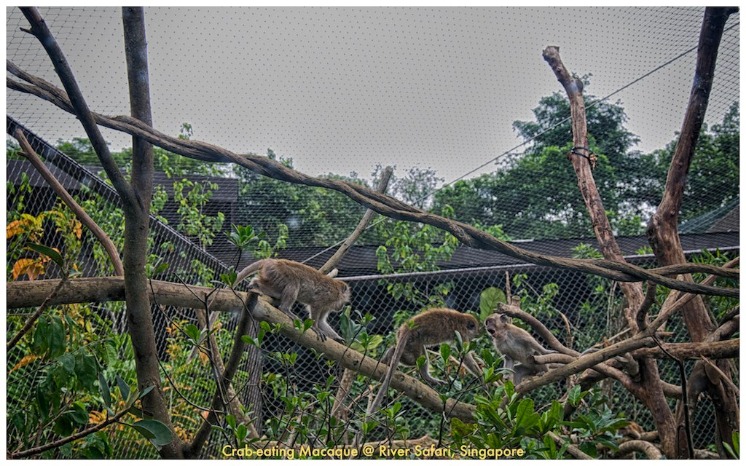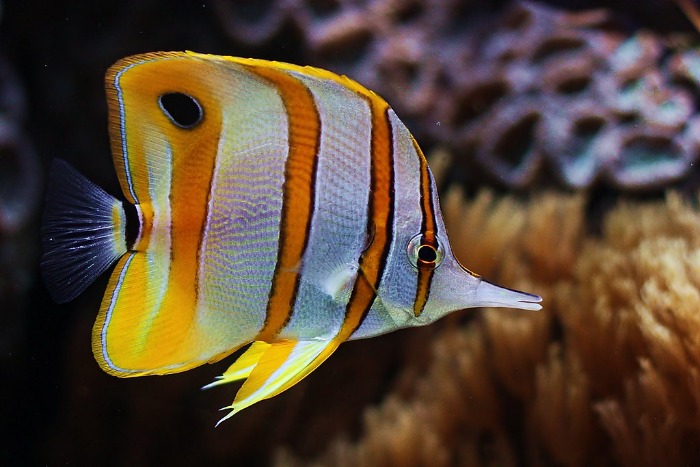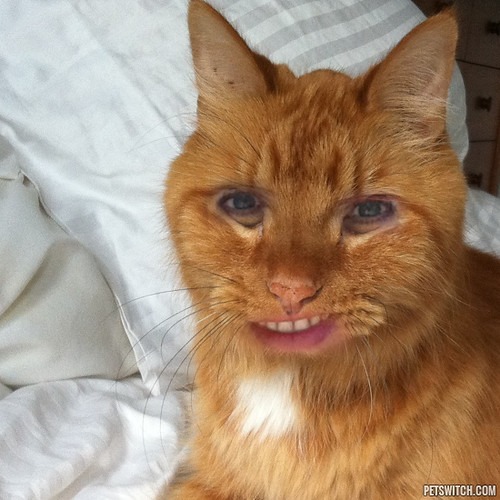What Do Aardvarks Eat? All About The Aardvark’s Diet
Gestation lasts eight months, after which a female births a single cub. The baby, hairless and about six pounds, is born during a peak time of food availability—either before or during the rainy season. As burrowing mammals with porcine snouts, aardvarks are true to their name, which translates to “earth pig” in the Afrikaans language. Ants also provide a good source of protein and other nutrients for aardvarks. So they are a good alternative to termites when they are not available.
The aardvark’s coat is thin, and the animal’s primary protection is its tough skin. Aardvark, (Orycteropus afer), stocky African mammal found south of the Sahara Desert in savanna and semiarid areas. The name aardvark—Afrikaans for “earth pig”—refers to its piglike face and burrowing habits. The aardvark weighs up to 65 kg (145 pounds) and measures up to 2.2 metres (7.2 feet) long, including the heavy, 70-cm (28-inch) tail. The face is narrow with an elongated snout, very reduced eyes, and ears up to 24 cm (9.5 inches) long. The aardvark’s coat is scant and yellowish gray; the face and tail tip may be whitish.

Their population levels are stable, but they are in a somewhat precarious position. Besides their unique appearance, aardvarks have a number of other traits that you may not know about. An aardvark features as the antagonist in the cartoon The Ant and the Aardvark as well as in the Canadian animated series The Raccoons. The aardvark is known to be a good swimmer and has been witnessed successfully swimming in strong currents.[31] It can dig a yard of tunnel in about five minutes,[30] but otherwise moves fairly slowly. In Zambia and Mozambique, the bushmeat trade is a threat to aardvarks, according to the IUCN.
Aardvarks are the only living member of the order Tubulidentata, and their most closely living relatives include golden moles, elephants and manatees. As night falls, aardvarks will emerge cautiously from their dens, jumping around on the lookout for predators. They are able to see at night, but otherwise have poor vision and are color-blind. They rely on their senses of sound and smell, using their long ears and snouts to get around and find insects.
People rarely see aardvarks, mostly because they’re solitary, nocturnal, and spend so much time underground. They also lack the reflective tissue that makes the eyes of some animals glow in the dark. Epps learned to recognize aardvark tracks and poop (which they bury) when working as post-doctoral researcher nearly 20 years ago in Tanzania. In 2016, during a sabbatical, he returned to Africa for six weeks to see if he could spot aardvark digging signs, track them through the bush and find their buried droppings.
Aardvarks look like a mixture between a very large armadillo without any armor, and a pig. They have an elongated snout, long pointed ears, a rounded back, and a long tail. They have tough skin coated in sparse hair, and the hair on their legs is much longer than on the rest of their bodies. They also have dense hair around each Check this for Doeat.top What do animals eat in the rainforest nostril to protect their noses while digging. The aardvark is the only species in the family Orycteropodidae and the only living member of order Tubulidentata (“tube teeth”). The ordinal name refers to the tiny columnlike tubules of dentine that are fused together to constitute each molar; adults lack canine teeth and incisors.
In a just-published paper in Diversity and Distribution, the researchers used genetic information gleaned from 104 aardvark poop samples to begin to understand the range of where they live. “Everyone had heard of aardvarks and they are considered very ecologically important but there has been little study of them,” said Clint Epps, a wildlife biologist at Oregon State. “We wanted to see if we could collect enough data to begin to understand them.” Aardvarks do face threats, however, including habitat loss from agricultural development and a decline in insect prey due to pesticides. Their burrowing habit would also be quite difficult to sustain in a backyard. Humans do not usually cross paths with aardvarks because these animals are nocturnal, and can be quite secretive.
A nocturnal feeder, it subsists on ants and termites, which it will dig out of their hills using its sharp claws and powerful legs. It also digs to create burrows in which to live and rear its young. The animal is listed as “least concern” by the IUCN, although its numbers are decreasing. Aardvarks are afrotheres, a clade which also includes elephants, manatees, and hyraxes. Ants are more plentiful during the wet season, whilst termites are more common in the dry season.
The cub will stay with its mother until she gives birth to her next cub, and is capable of having its own cubs at two years old. “Our initial findings suggest that climate change will increase habitat fragmentation and limit gene flow for aardvarks, particularly where precipitation is expected to decrease and temperature increase,” Epps said. “With aridity expected to increase in southern-most Africa under most climate change scenarios, the need for further research is clear.” Closely related individuals were detected as far as 44 km apart, and individuals less than 55 km were more genetically similar. Thus, they found aardvarks may disperse up to 55 km from where they are born.
Aardvarks are mostly absent in Namibia, Ghana, Madagascar, and the Ivory Coast. Insects are swallowed whole, and their stomach as some kind of gizzard which has the function of grinding all the consumed insects.
Individuals were detected at multiple locations separated by up to 7 kilometers, indicating that home ranges could be larger than previously determined, particularly in arid areas where food resources may be low. The International Union for the Conservation of Nature lists aardvarks in the category of “least concern,” in part due to the broad range of ecosystems they inhabit. However, little is known about current population trends or their actual distribution across the landscape.

A baby aardvark stays in the burrow for two weeks and then begins to venture out to forage at night with its mom. Babies begin digging for their own meals when they reach six months and they grow to full size in about one year. In captivity, it is tough to replicate their natural termite and ant-based diet. In zoos, aardvarks are typically fed a semi-liquid diet which is a mix of mealworms, various fruits and vegetables, dog food, biscuits, and meat.
The squadron mascot was adapted from the animal in the comic strip B.C., which the F-4 was said to resemble. They are very secretive animals so very little is known about their way of life. The International Union for the Conservation of Species considers the aardvark a species of “least concern,” meaning their populations are stable. The species has robust numbers in protected areas, such as South Africa’s Kruger National Park. They then used the genetic information to infer aardvark distribution and movement across the landscape. For example, if genetic testing showed that fecal samples collected in different spots came from the same aardvark, they then used this information to determine the scale of individual movements.
This mixture provides the aardvark with all the nutrients they need and are a good substitute for their natural diet. All of these adaptations work together to make aardvarks highly specialized – and effective predators of insects that live in the soil. In South Africa, the genetic information they gathered suggested three regional divisions of aardvarks, indicating that animals in western, central and eastern regions of South Africa were somewhat isolated from each other.
The Oregon State researchers believe the species is understudied because they are nocturnal, hard to trap and exist in low densities across large and often remote landscapes. Though aardvarks remain widespread, humans are the aardvark’s biggest threat. Some landowners don’t like the holes that aardvarks leave behind and kill the aardvarks. The use of pesticides to grow crops on land inhabited by aardvarks has also reduced the number of insects available for aardvarks to eat.
The four toes on the front foot (five on the hind feet) are equipped with strong, flattened nail-like “hooves” resembling spades. When the nest has been broken into, the aardvark can probe the hole with its snout. The snout is long, and is protected from dust by a fringe of rough bristles. They are ideal for feeding on ants or termites swarming through a hole in their nest. Termites are definitely the most important food source for aardvarks, and they make up the majority of their diet. A single aardvark can eat up to 50,000 termites in a single night, using its keen sense of smell to locate termite mounds.
Wrapped in a piece of skin and worn on the chest, the charm is said to give the owner the ability to pass through walls or roofs at night. These mammals are myrmecophagous, which means that ants and termites make up the vast majority of their diet. The aardvark and the aardvark cucumber have a symbiotic relationship, which means both creatures benefit from the interaction.

Aardvarks are highly specialized to eat insects, and they have various characteristics that reflect this specific diet. Aardvarks are relatively large African mammals that roam much of the continent south of the Sahara. They are odd-looking animals, with long snouts used for finding insects. Once it uses its sensitive snout to locate food, the aardvark digs it out using sharp claws. For example, aardvarks have thick skin and tough, rubbery lips that are resistant to insect bites and stings.
Once an aardvark finds a termite or ant nest, it uses its powerful claws to dig down or rip open the nest for consumption. The other adaptation that makes aardvarks so effective at feeding on insects is their long, sticky tongue, which can be up to 30 cm, or 12 inches, in length. Their tongue is coated with sticky saliva, which helps to trap insects and bring them into the aardvark’s mouth. The aardvark’s fast digging skill also helps protect it from predators, such as hyenas and lions. When threatened, an aardvark can dig a hole and cover itself up in about ten minutes. The aardvark gets its name from a South African word meaning “earth pig.” Although the aardvark looks like a pig, especially with its body and snout, aardvarks actually share common ancestors with elephants and golden moles.

Just like what they do for termites, aardvarks locate ant colonies using their well-developed sense of smell, and they use their tongue to capture them. While ants are not as important a food source as termites for aardvarks, they are still a valuable and significant part of their diet in the wild. The aardvark is a fascinating animal that is known for its unique physical features, its ability to dig burrows, and its nocturnal behavior. Another interesting thing about aardvarks is their diet, which is primarily made up of insects – but not only.
Some are also poached for their teeth, which are believed to prevent illness and are worn as good luck charms by some tribes. Because of the aardvark’s elusive nature, little is known about its mating habits in the wild. Aardvarks are well adapted to feeding on termites and other insects and have several physical adaptations that help protect them from being bitten.
They give birth to a single baby, called a “cub,” within their burrow. The aardvark cub is very wrinkly, with floppy ears when it is first born. After three weeks it will grow into the folds and be able to hold its ears upright.

If threatened while away from a sheltering burrow, an aardvark can dig its way out of sight in five minutes. An acute sense of hearing protects it from being surprised by predators, which include pythons, lions, leopards, and hyenas. If a predator tries to dig it out of its burrow, the aardvark rapidly moves soil to block the tunnel behind itself. The nocturnal animals use their long noses and keen sense of smell to sniff out ants and termites, which they lap up with an anteater-like tongue covered in sticky saliva. These insects make up most of the aardvark’s diet, although they’ll occasionally eat beetle larvae. The aardvark is found over much of the southern two-thirds of the African continent, avoiding areas that are mainly rocky.
However, if food supplies become scarce, aardvarks will sometimes eat fruit, such as the aardvark cucumber, and soft-bodied insects to supplement their diets. It is 60 centimetres (24 in) tall at the shoulder, and has a girth of about 100 centimetres (3.3 ft).[22] It is the largest member of the proposed clade Afroinsectiphilia. The aardvark is pale yellowish-grey in colour and often stained reddish-brown by soil.
Recent research suggests that aardvarks may be particularly vulnerable to alterations in temperature caused by climate change. Aardvarks are amazing, and unique animals that have a highly specialized diet consisting mainly of insects, with termites being their primary food source. Aardvarks are well adapted to feeding on insects, with several unique physical adaptations that help them to locate, capture, and consume their prey. As we have seen, aardvarks have several physical adaptations that make them highly effective at feeding on insects in the soil. It allows them to root through the soil and dig deep into termite mounds to access their prey.
The split between this ancestral African stock and that leading to the ungulate, carnivore, xenarthran, and cetacean orders occurred as much as 90 million years ago. Fossils indicate that Tubulidentata was recognizable about 54 million years ago. Despite often being compared to pigs and South American anteater, aardvarks are not related to them.
They also have long, sticky tongues that they use to capture insects, which helps to keep them at a safe distance from the insects’ mandibles. Beetles and grubs are often found in decaying logs or in the soil, and once again, it is aardvarks’ sense of smell and claws that enable them to locate and eat these insects. As other good sources of protein and other nutrients, these other insects help to supplement their diet in the wild. Aardvarks use their claws to dig up the fruit, and then use their powerful jaws to crack open the hard outer shell to access the fleshy interior.


